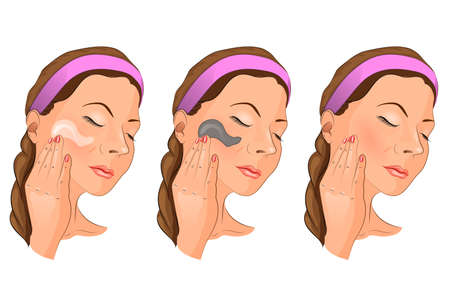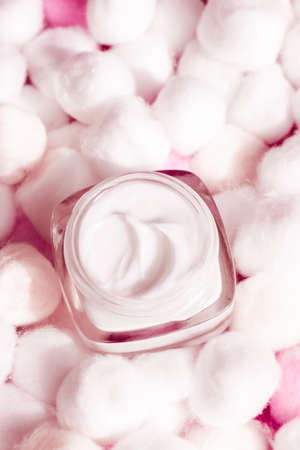Understanding Oily Skin
Oily skin is a common skin type in the U.S., especially among teens and young adults, but it can affect anyone regardless of age or background. Characterized by an overproduction of sebum—your skin’s natural oil—oily skin often appears shiny, especially on the forehead, nose, and chin (known as the T-zone). People with oily skin may notice enlarged pores, frequent breakouts, and makeup that seems to slide off by midday. Despite popular belief, oily skin still needs proper moisturization. Skipping moisturizer can actually backfire, causing your skin to produce even more oil to compensate for dehydration. The right moisturizer helps balance oil production, supports your skin’s barrier, and keeps it looking fresh without feeling greasy. Understanding these basics is the first step toward building a skincare routine that works for you—no matter how much shine you’re working with.
2. Why Moisturizing Is Important for Oily Skin
Many people with oily skin think skipping moisturizer will help reduce shine, but that’s actually a common skincare myth. In reality, the right moisturizer is essential for keeping oily skin healthy and balanced. When your skin lacks moisture, it can go into overdrive, producing even more oil to compensate—leading to clogged pores and breakouts. A good moisturizer helps regulate oil production while preventing that greasy feeling so many people want to avoid.
The trick is finding a product designed specifically for oily skin types. These formulas hydrate without suffocating your pores or leaving behind a heavy residue. Instead of adding extra shine, they lock in just enough moisture to keep your skin barrier strong and resilient. Here’s how the right moisturizer can make all the difference:
| Benefit | How It Helps Oily Skin |
|---|---|
| Balances Oil Production | Prevents your skin from overcompensating by producing excess oil |
| Non-Comedogenic | Formulated not to clog pores, reducing risk of breakouts |
| Lightweight Texture | Feels comfortable and absorbs quickly without leaving a greasy finish |
| Strengthens Skin Barrier | Keeps moisture in and irritants out, supporting overall skin health |
If you’re dealing with oily skin, don’t skip this step! The key is choosing a lightweight, non-comedogenic moisturizer that gives your skin what it needs—hydration without the hassle.

3. Key Ingredients to Look For
When searching for the perfect moisturizer for oily skin, it’s all about choosing ingredients that work with your skin—not against it. Non-comedogenic ingredients should top your list. This term simply means the product won’t clog your pores, which helps keep breakouts at bay and prevents that greasy feeling many of us try to avoid. Make sure you spot “non-comedogenic” on the label before anything else.
Oil-free formulas are another essential feature to look out for. These products are designed specifically for people who struggle with excess oil and shine. Instead of heavy oils, they rely on lightweight humectants and emollients that hydrate without making your skin feel slick or suffocated.
Don’t forget about powerful hydrators like hyaluronic acid. This superstar ingredient attracts and holds water in the skin, delivering deep moisture while remaining feather-light. It’s a favorite among dermatologists because it plumps up skin without adding oil or residue—perfect for a fresh, healthy glow minus the shine.
Other ingredients worth considering include glycerin, which helps draw moisture into the skin, and niacinamide, which can help regulate oil production and soothe redness. Avoid heavy fragrances and alcohols, as these can irritate sensitive, oily-prone skin or lead to even more oil production.
Ultimately, finding a moisturizer with these key ingredients ensures that your skincare routine supports clear, balanced, and nourished skin—all day long.
4. What to Avoid in a Moisturizer
When picking out a moisturizer for oily skin, it’s just as important to know what to skip as it is to know what to seek. Certain ingredients commonly found in moisturizers can actually make oily skin feel even greasier or trigger unwanted breakouts. Understanding these ingredients can help you make smarter choices and keep your skin looking its best.
Common Ingredients That May Cause Issues
| Ingredient | Why to Avoid It |
|---|---|
| Mineral Oil & Petrolatum | These heavy occlusives can clog pores and increase shine, making oily skin look slicker. |
| Coconut Oil | This natural oil is highly comedogenic and may cause breakouts on oily or acne-prone skin. |
| Lanolin | While moisturizing, it’s heavy and can trap oil and bacteria, leading to clogged pores. |
| Silicones (Dimethicone) | They provide a smooth finish but may trap sebum beneath the surface, causing congestion over time. |
| Alcohol (Denatured Alcohol, Ethanol) | Though they may initially mattify, they can strip the skin and trigger rebound oil production. |
| Sodium Lauryl Sulfate (SLS) | This harsh detergent can irritate and dry out the skin, prompting excess oiliness as your skin tries to compensate. |
| Fragrance & Dyes | Added scents and colors are unnecessary in moisturizers and can irritate sensitive or acne-prone skin. |
Keep an Eye on Labels
If you’re shopping at places like Target, Ulta, or Sephora in the U.S., always check the ingredient list before buying. Look for words like “non-comedogenic,” “oil-free,” or “won’t clog pores.” These terms are more than just marketing—they signal that a product is less likely to cause breakouts or add unwanted shine.
Pro Tip:
If you’re unsure about an ingredient or how your skin will react, patch test the moisturizer on your jawline for a few days before using it all over your face. Your skin will thank you for the extra caution!
5. Texture and Application Tips
When it comes to picking the right moisturizer for oily skin, texture really matters. Generally, you’ll find three main types: gels, lotions, and creams. Gels are super lightweight and absorb quickly without leaving a greasy residue, making them a favorite among folks with oily or acne-prone skin. Lotions are also light but offer a bit more hydration than gels—great for those who want moisture without heaviness. Creams, on the other hand, tend to be richer and are usually best reserved for drier skin types or as an overnight treatment if your skin needs extra care.
How to Choose the Right Texture
If your skin gets shiny fast or feels slick by midday, stick with gel-based moisturizers for that refreshing, barely-there feel. If you notice some dry patches along with oiliness (hello, combo skin!), try a lightweight lotion. Creams can clog pores if you’re not careful, so use them sparingly if at all.
Application Matters
Getting the most out of your moisturizer is all about how and when you apply it. For best results, put it on right after washing your face—when your skin is still slightly damp—to help lock in hydration. Don’t overdo it; a dime-sized amount is usually enough for your whole face. And don’t forget your neck! Apply in gentle upward strokes using clean hands to avoid transferring bacteria or oils.
Timing Tips
Most dermatologists recommend moisturizing twice daily: once in the morning before sunscreen and makeup, and again at night as part of your bedtime routine. This keeps oily skin balanced without making it feel overloaded or greasy throughout the day.
6. Top Product Recommendations and Budget-Friendly Picks
Choosing the right moisturizer for oily skin can feel overwhelming with so many products lining the shelves, but sticking to tried-and-true American brands and trusted drugstore options can help you find a formula that fits both your skin’s needs and your budget.
Popular American Brands to Consider
For those seeking dermatologist-recommended options, Cetaphil and CeraVe are household names in the U.S., both offering lightweight, oil-free moisturizers that hydrate without clogging pores. Another favorite is Neutrogena, especially their Hydro Boost Water Gel—well-loved for its non-greasy feel and ability to lock in moisture without leaving a shiny finish. If you’re looking for a higher-end pick, Paula’s Choice has several gel-based moisturizers specifically formulated for oily or combination skin.
Best Drugstore Moisturizers for Oily Skin
You don’t have to break the bank to find an effective moisturizer. At most local drugstores like CVS, Walgreens, or Target, you’ll find affordable gems like Olay Complete All Day Moisturizer (Sensitive), which offers hydration minus the heaviness. E.l.f. Holy Hydration! Face Cream (Fragrance-Free) is another wallet-friendly option that delivers moisture while keeping shine at bay.
What to Look For on Labels
No matter your price point, scan labels for terms like “oil-free,” “non-comedogenic,” and “matte finish.” These keywords are your best friends when shopping for oily skin solutions. Also, consider formulas with added benefits such as SPF for daily sun protection or niacinamide to help balance oil production.
Your Perfect Match Is Out There
The best moisturizer for you will ultimately depend on your unique skin concerns and preferences. Don’t be afraid to test a few different products—many brands offer travel sizes or samples so you can try before you commit. Remember, taking care of oily skin doesn’t have to be expensive or complicated; sometimes the perfect fit is just down the skincare aisle at your local store.
7. Building Your Skincare Routine
Creating a skincare routine that works for oily skin can feel overwhelming, but it doesn’t have to be! The key is to keep it simple and consistent. Here are some practical tips to help you seamlessly integrate your moisturizer with other skincare steps for a well-balanced, effective routine:
Start with a Gentle Cleanser
Always begin by cleansing your face with a gentle, oil-free cleanser. This helps remove excess sebum and impurities without stripping your skin’s natural moisture barrier.
Apply Toner (Optional)
If you like using toner, opt for an alcohol-free formula. Toners can help balance your skin’s pH and prep your face for the next steps, but they aren’t mandatory for everyone.
Use Targeted Treatments
If you incorporate serums or spot treatments (like niacinamide or salicylic acid), apply them after cleansing and toning but before moisturizing. Let each layer absorb fully before moving on to the next product.
Moisturize Wisely
Select a lightweight, non-comedogenic moisturizer that suits your oily skin. Apply evenly across your face, focusing on areas that tend to get drier or need extra care. Don’t skip this step—even oily skin needs hydration!
Finish with Sunscreen in the Morning
In the morning, always follow up with an oil-free, broad-spectrum sunscreen. This step protects your skin from sun damage and helps prevent future breakouts and premature aging.
Keep It Manageable
You don’t need a 10-step routine—just focus on what works for you. Consistency is more important than complexity, so stick with products that make your skin feel balanced and comfortable. Over time, adjust as needed based on how your skin responds.
Pro Tip:
Try introducing one new product at a time to see how your skin reacts. This way, you can easily pinpoint what works and what doesn’t, making your journey toward healthy, shine-free skin much smoother.


